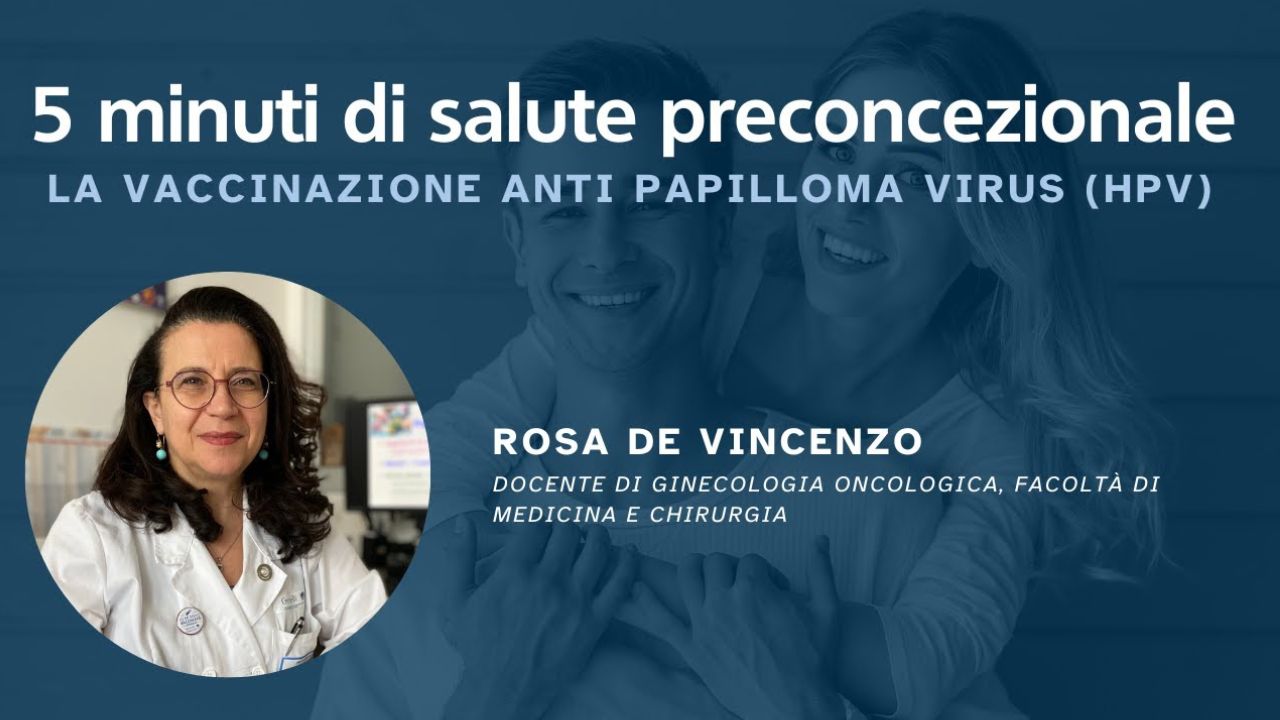HPV papilloma virus vaccination
Human papilloma virus (HPV) infection is the most common sexually transmitted infection in the world. It is estimated that about 80% of women will encounter the virus in their lifetime. Fortunately, in 80% of cases the infection resolves spontaneously even if it remains asymptomatic. The peak incidence of infection is at a young age and immediately after the onset of sexual activity.
HPV affects not only the cervix, but the entire lower gynecological tract, including the vagina, vulva, anus, perineum and - in men - penis. In addition, an important literature is emerging regarding the correlation between HPV and oropharyngeal cancers, such as those of the base of the tongue and the palatine tonsil. They are four times more frequent in men than in women.
Vaccination against HPV therefore offers the opportunity to prevent precancerous and cancerous lesions, not only of the uterine cervix, but also of the entire lower gynecological tract and tumors of the oropharynx. Vaccination can also be administered in adulthood, especially to at-risk categories such as immunosuppressed patients or patients on immunosuppressive therapy for autoimmune diseases, and homosexual people.
HPV vaccines have been marketed since 2007 and have proven to be effective, safe and well tolerated. Vaccination, initially aimed only at women, is now universal (women and men) and free for adolescents in the twelfth year of life.
Currently, a nonavalent vaccine is available against nine genotypes of the virus, two low-risk and seven high-risk. The initiation of sexual activity is not a contraindication to vaccination, which is also recommended up to the age of 26 to prevent viral genotypes that have not yet been acquired. In addition, women treated for HPV-related conditions, such as those undergoing diathermic loop conizations for precancerous lesions of the uterine cervix, may benefit from post-treatment vaccination to reduce the risk of recurrence.
Despite the effectiveness of the vaccine, vaccination coverage nationwide remains very low, especially for men. Efforts to improve coverage need to be implemented, including vaccination catch-up programs for women of childbearing age, leveraging cancer screening calls, digital reminder tools, school awareness campaigns, and actively engaging various professionals.
read more
-
Climate change and birth rateClimate change and fertility; A general topic for a particular problem that is still little studied and little investigated. We are all realizing how much climate change impacts our lives and how necessary it is to stem it, but few have carried out an analysis of the correlation between this phenomenon and the ability to procreate. We talk about it with Prof. Walter Ricciardi.
-
Welfare and birth rateThe Welfare State, developed since the nineteenth century to mitigate social risks such as unemployment and illness, has contributed significantly to the lengthening of the average life expectancy and to the change in the role of women in society. This change has influenced the traditional view of the family and has made it more difficult for women to reconcile work and family, also affecting historical birth rates. Prof. Gilberto Turati explains the current situation and the dynamics underlying it.
-
Andrological preventionWhen we talk about andrological prevention, we are probably entering a field unknown to many. Contrary to what happens for the female counterpart. In fact, the average age of the first gynecological examination is 15 years, unlike what happens in males where the first andrological specialist check-up often comes at a much older age, at the onset of clinical symptoms or when trying to get pregnant. Why is prevention important in the andrological field? This is what Dr. Carmine Bruno explains.
